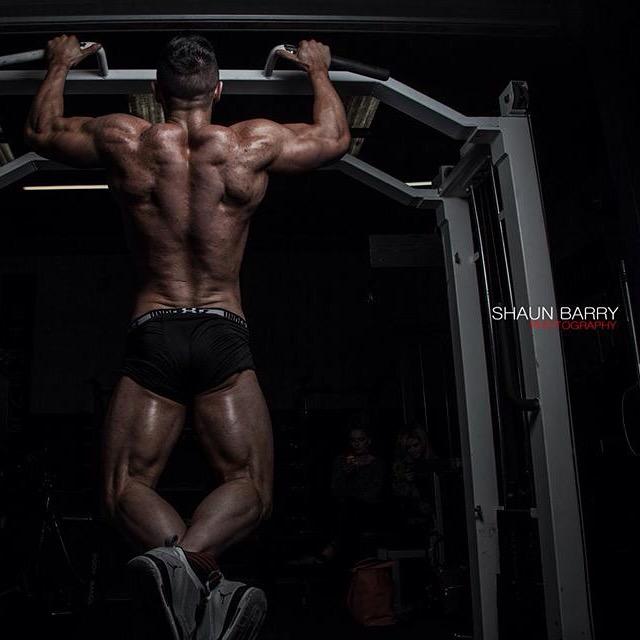In my last post, we got a great insight into the mind of Mike Samuels as part of the 'Meet the Coaches' series. This time out I've been speaking to Kavan Byrne, he's a guy that I've been following for a long time and whom I have a lot of respect for. I've been following his antics since his first show, not only is he a phenomenal athlete, he's a great guy. So without further ado, let's get to it.
Q. Tell us a little about your background. Have you always been health and fitness oriented? Have you always been a coach? If not, tell us about what you did before and why you wanted to become a coach.
A. Well I wasn't born but I was raised in a gym. My parents owned gyms all through my childhood and bodybuilders and the fitness industry was something i was very much exposed to and very much involved in from a young age, it was where I started my fitness and bodybuilding journey. I worked in and managed a supplement shop for 5 years through college from the age of 17/18 before I came a coach so I'm a bit of a supplement buff aswell :)
Q. As a coach, what are the key things that you try to instil in your clients?
A. Train smart not hard. There's a time and place to go balls to the wall but there's no point lifting everything unless it's with intent and understanding the reason as to why you're lifting it and what you want from it.
Q. Have you ever competed in any bodybuilding/powerlifting/sport related competitions? A. I have placed 3rd in Juniors in NABBA Mr. Ireland 2012 & 2013 and last year I placed 2nd in that same class the day after placing 4th in the RIBBF Nationals Junior class :) I'm 23 on the 1st March of this year so it's my last year as a junior and a good time to send me some monster zero as a present Al ;)
(Note from the author - The Monster must have gotten lost in the post, or it could be that I was just sending empty cans..)
Q. Describe your own training style/approach
A. I'm currently training powerlifting in Boyneside Strength & Performance , my coach Dean Gartland uses a conjugate system which I loves 2 upper body days and 2 lower body days one dynamic (speed work) and one max effort :) With bodybuilding, I like to pre exhaust every muscle group to begin with, work it as maximally and optimally as possible for a main move, work it from a stretched position then a finishing move to flood the blood in
Q. Who is your biggest inspiration? (Fitness or otherwise) and why?
A. I draw inspiration from a lot of different places and I always have, the bigger dude in the gym, my parents, my friends and from a pro level Flex Wheeler, Flex Lewis, Justin Compton and then the younger dudes Cody Montgomery and Dallas McCarver are big inspirations at the moment
Q. What would be your words of advice to anyone just starting out?
A. Enjoy it. It's a marathon not a sprint, don't try and take everything and do everything all at once. If you weigh 60kg soaking weight, don't try and get shredded like Lipsett, bulk up and build some muscle and a foundation (without becoming a blob)
Matt Wenning is a popular powerlifting coach in the states and has made the point that if your foundation isn't all that wide you can only peak so high. So the bigger the foundation, the bigger the peak
Q. There's a huge difference in your physique between your bodybuilding competitions. So it really begs the question - Is it something to do with the beard?
Q. There's a huge difference in your physique between your bodybuilding competitions. So it really begs the question - Is it something to do with the beard?
A. Between my first and second show I put on 14kg of stage weights, now I could've been lighter but I did some growing.
Face hair is the key and anybody who disagrees has a baby face hahaha
Q. What supplements do you currently use?
Q. What supplements do you currently use?
A. My go tos are a decent Whey protein, glutamine a good BCAA and intra carb powder. I'm using some Olimp and MyProtein stuff at the moment that are pretty decent
Q. Any projects on the horizon that you can give us a teaser of?
Q. Any projects on the horizon that you can give us a teaser of?
A. I'll be at BodyPower with my Sponsors Up&Cut and catching up with sown friendly faces in the industry :)
Few photo shoots and then of course I'll be back on stage this October to claim the NABBA Junior Mr. Ireland title ;)
Twitter - www.twitter.com/KayByrne_GWH
Instagram - www.instagram.com/kavb_gwh
As always, you can catch me on social media using the buttons below...


So there you have it, a quick crash course in the life and times of Kavan Byrne. If you're interested in finding out more, check out his social media channels - Twitter - www.twitter.com/KayByrne_GWH
Instagram - www.instagram.com/kavb_gwh
As always, you can catch me on social media using the buttons below...







